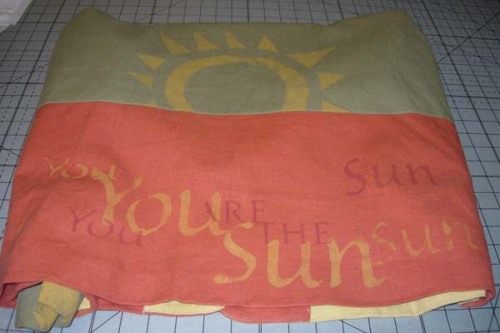Sit back and grab a cup of your favorite stimulant drink, and I'll bring you up to speed on a law you may not have heard about. Or if you've heard about it, you may think it doesn't apply to you. Read on-- it applies to everyone.
In 2007, lead in toys was all over the news. There were large recalls of toys that had lead in their paint. Reacting to this in the knee-jerk feel-good way that is their trademark, Congress passed the
Consumer Product Safety Improvement Act (CPSIA) in 2008. The well-intentioned object of this law was to make extra-super-duper sure children's products laced with lead never, ever again appeared on the evening news. Unfortunately, we all know where the road paved with good intentions leads. The bill was poorly thought out and passed by huge bipartisan veto-proof margins, and was signed into law by Pres. Bush in August of 2008.
CPSIA addresses the problem of lead in children's products in a manner much like swatting a fly with a shotgun blast. Its scope wasn't limited to the "big guys" or the "bad guys," and it affects more than just businesses--
libraries, charities,
thrift stores, even
yard sales fall under its dominion. It allows no exceptions-- technically you can get an exemption for a particular item, but only if you meet an impossible-to-meet standard. And it covers waaaay more than just toys. Just about everything child-sized, child-colored or child-oriented or that a child 12 and under might touch is included, whether or not it's ever been a danger: clothing, ATVs, school supplies, bicycles, cell phones, lamps, books, hair ribbons, underwear, science kits, rocks, chairs, shoes, blankets, Cub Scout insignia, food-grade organic play-dough, and many, many other things you'd never have thought ought to be tested for lead in the first place. The requirements are so stringent that they amount to an outright ban on child-sized ATVs, bicycle tire valve stems, ballpoint pens with cartoon characters on them, rocks for geology class, thrift store clothing, charities that fix up bikes for poor kids, and books published before 1984. Even
"adult novelties" aren't immune from being considered "children's products" by the
Consumer Product Safety Commission (CPSC), the government agency tasked with enforcing this law.
The CPSIA law puts in place many requirements, but here are the highlights that relate most frequently to handcrafters:
- You have to make sure your product and all its components have less than 100 parts per million of lead in them, BEFORE selling your product. There's a list of materials that are exempt from lead testing and phthalate testing, but if you use any material that's not on that list, you have to either get it tested yourself (at great expense) or find a source for it that provides test results.
- All tests must be done by a CPSC-certified laboratory. These tests destroy the sample completely. Home lead test kits do not provide enough information to meet the requirements, and XRF testing (a cheaper, non-destructive method) is not allowed.
- All children's items must bear a permanent tracking label that has enough info on it to identify your name or company's name, where you are located, and when the product was made.
- You must keep records of where you bought your materials and on what basis you claim they meet the lead standard.
In addition, CPSIA also requires manufacturers of ALL items (not just children's items) to provide a General Conformity Certificate that certifies that it meets all the standards that apply to that product. You have to list the standards and give the name of the laboratory that did the testing. These certificates are required for exporting to other countries. If your products don't comply with CPSIA, they cannot legally be sold or even given away in the United States, nor exported to other countries.
Now, the CPSC is very busy and they've made it clear through their enforcement actions that they don't intend to really go after us small-time crafters or crack down on yard sales, mostly because they can't extract
big newsworthy penalties from us. But they have also said that they're watching eBay and Etsy (
yes, they know about Etsy) so you may want to make sure you're in compliance. CPSC hasn't been enforcing a lot of the provisions because they decided to stay enforcement of them for two years, but that stay is about to expire and they've said publicly that they won't be renewing it.
Affected businesses large and small (mostly small) have been trying for two years to get Congress to listen to us tell them that CPSIA is going to either drive us out of business or drive us to not make children's products. As the deadlines rolled in I watched many of my friends' businesses go under. Mine was six days away from having to close permanently, as CPSC was unable to write the regulations they needed to enforce the law before the enforcement deadlines passed. Fortunately, with the change of parties in the House, we're finally able to get some action. The
House Energy and Commerce Committee has oversight here, and they have already had a meeting to hear suggestions for improving CPSIA. We are hopeful that they might take action before the CPSC's stay of enforcement expires.
This is just an overview; there is much, much more in this law that makes it even worse. In some cases it's physically impossible to comply. I could have written a book on it-- heck, if you add up everything I've written over the last couple years on the topic, it'd probably be book-length! I'll be posting more later on about meeting specific CPSIA requirements and keeping you abreast of the breaking CPSIA news.
If you have questions about CPSIA you'd like to see answered in future posts, please put them in the comments.



















